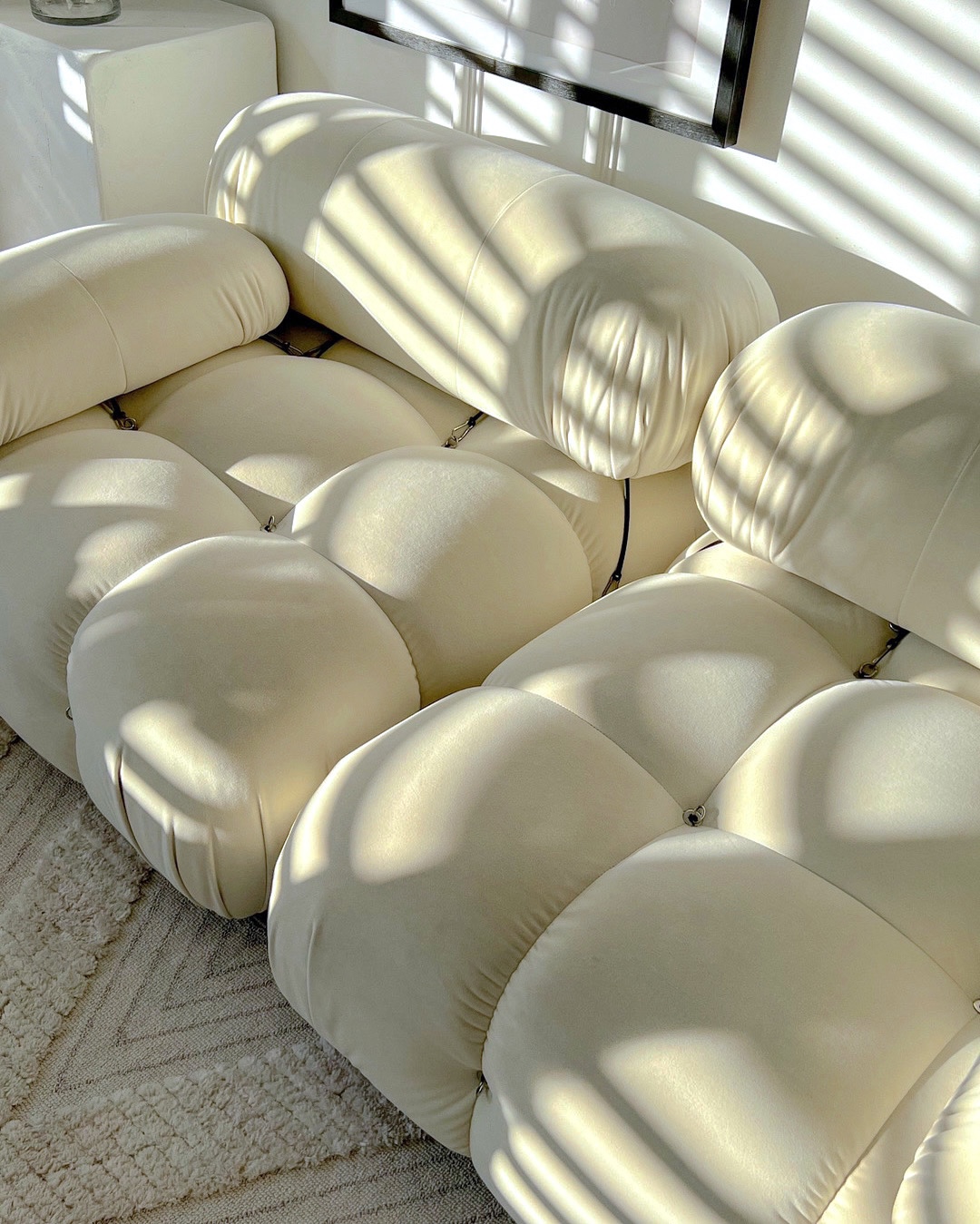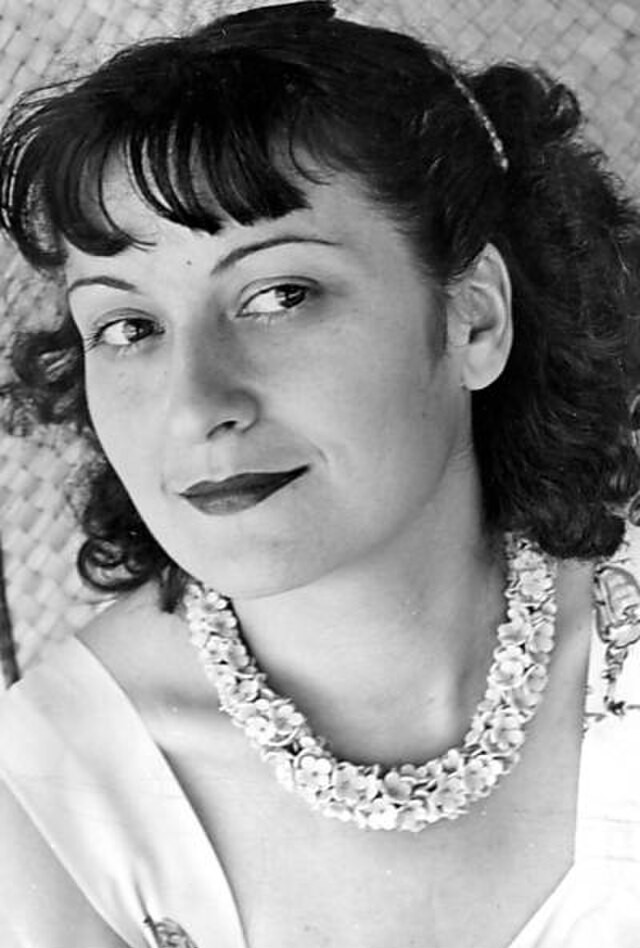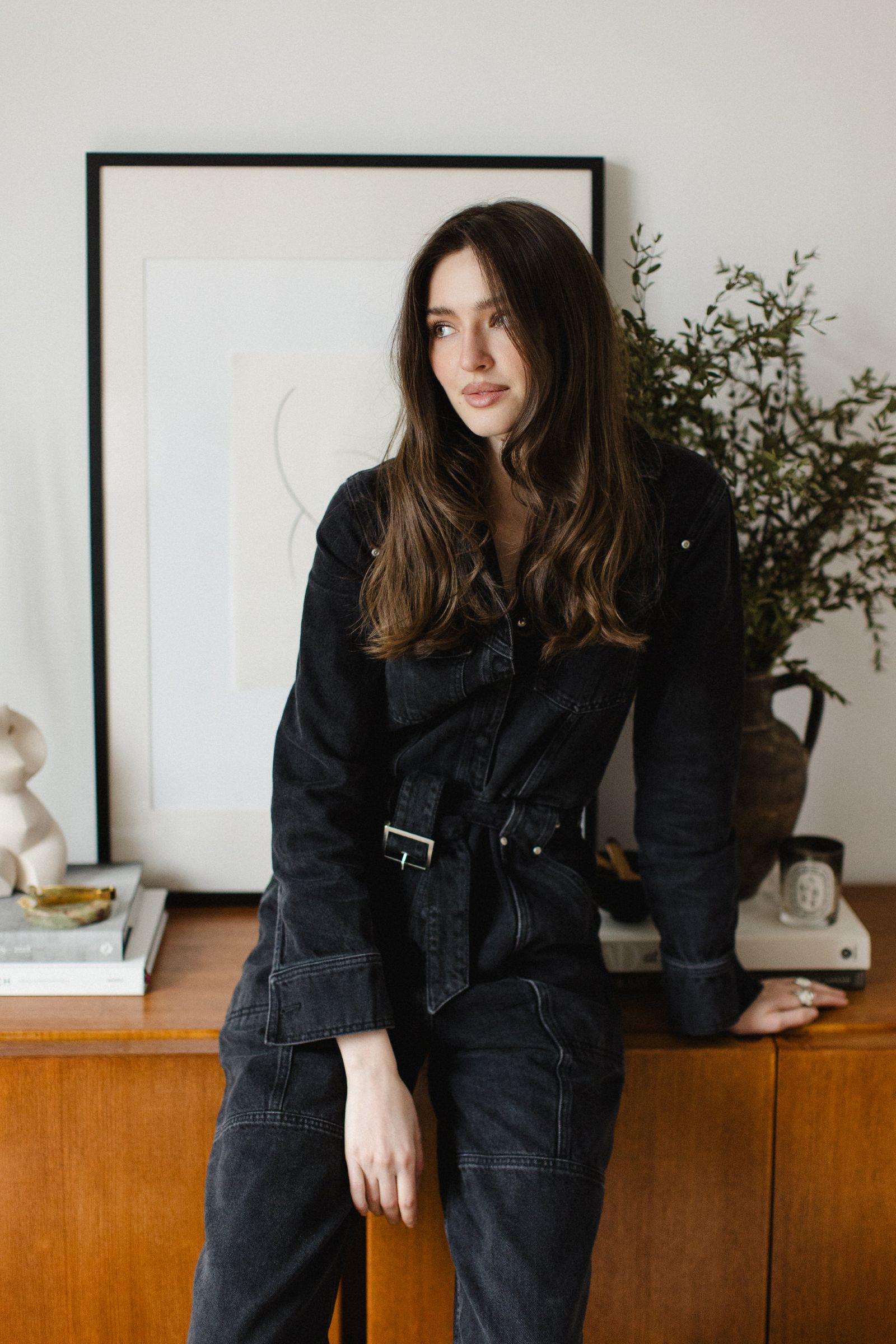
Elsie de Wolfe, photographed in 1910.
Photo by Bain News Service, via Library of Congress (Public Domain).
The domestic landscape at the close of the 19th century was often a testament to an era’s particular sensibilities. Victorian interiors, steeped in a philosophy that valued abundance and an overt display of prosperity, frequently succumbed to a weighty formality. Rooms became veritable showcases, laden with layers of rich fabrics, heavy furniture, and an array of objects that, while cherished, collectively obscured light and air. Dark hues prevailed, windows were often swathed in elaborate draperies, and every available surface seemed to beckon for ornamentation.
This aesthetic, which to modern eyes might appear simply as clutter, was in fact a complex response to the prevailing conditions of the time. Homes were frequently cold and poorly lit, especially in the gaslight era. Heavy window coverings served a practical purpose, preventing draughts and retaining what little warmth emanated from coal fireplaces. The burning of coal, however, produced byproducts that quickly damaged surfaces, necessitating easily replaceable fabrics and wallpapers to protect furniture and walls. Furthermore, the low light levels meant that cherished photographs and smaller items needed to be placed close to the viewer, often covering multiple small tables. What appears as a preference for maximalism was, in part, a functional adaptation to the technological and environmental constraints of the period. This interplay between practical necessity and aesthetic choice highlights how design is not merely a matter of taste, but is intrinsically woven into the fabric of daily life and the available technology. The dense, layered interiors, while perhaps offering a certain cosiness, ultimately sacrificed light and air, creating an environment ripe for transformation.
The Rebel’s Debut: From Stage to Salon
Into this world of Victorian excess stepped Elsie de Wolfe, born Ella Anderson de Wolfe in New York City in 1859. Her early years, including a period spent in Scotland and a presentation at Queen Victoria’s court in 1883, furnished her with a sophisticated yet perhaps confining understanding of societal expectations. From a remarkably early age, however, de Wolfe displayed a clear aversion to what she considered the visual excesses around her, a sensitivity that foreshadowed her future trajectory. Her discomfort with the cluttered, dark interiors of her childhood home was more than a mere preference; it was an instinctive rejection of an “ugly world,” as she termed it.
De Wolfe initially embarked upon a career as an actress, making her professional debut in 1891. While her dramatic talents may not have secured her lasting theatrical fame, her innate elegance and striking personal style certainly did. She quickly became celebrated for her impeccable wardrobe and an uncommon ability to carry herself with flair. It was, in fact, this very theatrical world that nurtured her burgeoning interest in interior decoration; her experience in staging plays directly informed her understanding of how environments could be manipulated to create specific moods and visual effects. This period, far from being a mere detour, was a formative apprenticeship in visual presentation and spatial arrangement. Her social connections, particularly with Elisabeth Marbury, a pioneering theatrical agent and Broadway producer whose clients included Oscar Wilde, proved invaluable. Marbury, a close friend and companion from 1892, played a pivotal role in providing de Wolfe with the initial platform and network that would prove so instrumental in her career transition and subsequent success.
The pivotal shift occurred in 1905, when, at the urging of Marbury and Sara Cooper Hewitt, de Wolfe retired from the stage to dedicate herself entirely to interior design. Her talent had already been showcased in the Irving House, the residence she shared with Marbury, which served as an early demonstration of her emerging aesthetic. This transition illustrates how groundbreaking innovations frequently arise from individuals who bring diverse experiences and perspectives to a field, rather than solely from within established traditions. Her theatrical background provided a unique foundation for her design sensibilities, making her acutely attuned to the art of “staging” a home.
Illuminating the Age: De Wolfe’s Aesthetic Revolution
Elsie de Wolfe’s design ethos was a direct and spirited rebellion against the prevailing Victorian aesthetic. She sought to banish the dark, heavy, and cluttered interiors of her upbringing, advocating for a radical departure from the ornamental excess that had defined the era. Her famous declaration, “I believe in plenty of optimism and white paint,” encapsulated her preference for bright, airy spaces, a sentiment that resonated with a generation yearning for a lighter touch.
Her style represented a pioneering shift towards an aesthetic that was not only lighter and airier but also prioritised comfort. Drawing inspiration from 18th-century French and English design from art, literature, theatre, and fashion, de Wolfe introduced principles of simplicity, light colours, and visual harmony. She favoured pale palettes, chintz fabrics, wicker furniture, and decorative screens, often employing trelliswork motifs to evoke the illusion of an outdoor garden pavilion within interior spaces. Mirrors became a signature element, strategically employed to illuminate and expand rooms, whilst furniture painted in white or pale colours replaced the heavy, dark wood prevalent in Victorian homes. Crucially, her designs embraced comfort and functionality without ever compromising on elegance.
This aesthetic revolution was not merely a stylistic preference; it was a deliberate embrace of 18th-century French elegance, thoughtfully reinterpreted to prioritise comfort, light, and functionality for modern living. It marked a shift from interiors serving primarily as status symbols, characterised by Victorian excess, to spaces designed for well-being and a more refined, yet relaxed, lifestyle. The causal link is clear: her thoughtful revival and adaptation of classical French styles, combined with an emphasis on comfort and functionality, signalled a move towards a more human-centric design, moving beyond purely ornamental display. The feminine aspect of her designs, evident in projects like The Colony Club, also presented a deliberate counterpoint to the masculine-dominated Victorian spaces, reflecting a broader societal shift in women’s roles and aspirations. Her first official and arguably most celebrated commission, the interior design of The Colony Club in New York in 1905, served as a powerful testament to her new vision. This new women’s social club became a turning point in her career, propelling her to widespread fame. For the Colony Club, de Wolfe consciously eschewed the smoky, leathery shadows typical of gentlemen’s clubs, opting instead for a palette of chintz, wicker, pale paint colours, and trellises. The result was an environment that was elegant, feminine, and sophisticated, setting a new standard for public and private spaces alike.
Crafting a Calling: The Architect of a New Profession
Elsie de Wolfe is widely acknowledged as the pioneering figure who invented the profession of interior decoration. Before her, the embellishment of homes was largely an amateur pursuit, a domestic art practised by individuals, often women, without formal recognition or structured remuneration. De Wolfe changed this irrevocably. She established a business, set professional fees, and meticulously managed client commissions, thereby carving out a distinct and legitimate new profession. Her seminal 1913 book, The House in Good Taste, codified her principles for a broader audience, transforming aspirational design into an accessible discipline. Filled with practical advice and philosophical insights, it became a guiding text for homeowners and a blueprint for aspiring decorators. Through this publication, and the meticulous running of her burgeoning studio on Fifth Avenue, she formalised practices that legitimised interior design as a respected, commercial enterprise. Her efforts opened a genuinely new economic avenue, particularly for women, demonstrating that aesthetic expertise held tangible commercial value and could support a robust professional career.
Her ascent was aided by a confluence of factors: her extensive social connections, the public recognition she had gained as an actress, and her early, successful venture into decorating her own home, Irving House. The Colony Club commission, while a landmark design project, was also her first paid commission, a truly pivotal moment that established the commercial viability of interior design as a legitimate profession. From this point, her reputation grew swiftly, leading to a steady stream of commissions for prestigious private homes, clubs, and businesses across America. By 1913, her studio had expanded to occupy an entire floor of offices on 5th Avenue, a testament to the rapid validation and growth of this emerging industry.
De Wolfe’s professionalisation of interior design was not merely about offering a new service; it was about formalising and legitimising an entirely new economic industry, particularly one that offered opportunities for women. She monetised skills that had previously been undervalued within the domestic sphere, demonstrating that aesthetic expertise held tangible commercial value. Her success moved interior decoration from an informal, often unpaid, domestic art to a recognised, remunerated profession. This had a particular impact on women, creating a lucrative career avenue where none had formally existed, thereby challenging traditional gender roles within the home and beyond. Her business growth, exemplified by her expanding studio, illustrates the swift acceptance and validation of this new industry. Her pioneering efforts illustrate how individual innovation, combined with market demand and strategic networking, can indeed create entirely new industries, extending her legacy beyond aesthetics to the economic empowerment and professional recognition of design expertise.
A Taste for the Modern: Shaping Public Sensibilities
In 1913, Elsie de Wolfe cemented her influence by authoring The House in Good Taste, a book that quickly became a seminal work in interior design literature. This volume, compiled from her earlier articles in newspapers and magazines, offered timeless design advice that transcended her elite clientele, reaching and shaping popular taste across America.
The book served as a manifesto for her design philosophy, advocating for simplicity and advising readers to eschew ostentation and clutter. She encouraged the dismantling of heavy draperies to invite more light into homes and urged the replacement of garish colours with soothing beige and ivory tones. The principles outlined within its pages – focusing on creating elegant, functional, and comfortable living spaces – became a guiding light for a new generation of homeowners and aspiring decorators. Its widespread reach was further amplified by magazines like House Beautiful and House and Garden, which showcased her work and propagated the idea that stylish interiors should reflect a recognisable “period style,” albeit one reinterpreted for modern sensibilities.
The House in Good Taste served as a powerful instrument for standardising and disseminating de Wolfe’s aesthetic principles far beyond her immediate circle of wealthy clients. This process effectively shaped broader public taste and established a shared vocabulary for modern interior design. This transition from private commission to mass-market publication underscores the growing influence of design media in shaping consumer preferences. The book acted as a catalyst for making design principles more accessible. By formalising her ideas and distributing them through mass media, de Wolfe transformed herself from a decorator for the elite into a tastemaker for the aspiring middle class. This established a new model for design influence, moving beyond bespoke commissions to published guidance, thereby creating the archetype of the “celebrity decorator.” This demonstrates how intellectual property, in the form of her structured design philosophy, and its dissemination through media, can amplify the impact of an individual’s work, leading to widespread cultural shifts in aesthetics and lifestyle. It also foreshadowed the crucial role design publications and media would play in shaping consumer desires and setting trends for decades to come.
Beyond the Boudoir: A Cultural Force
Elsie de Wolfe’s life was, in itself, a meticulously curated work of art, as carefully composed as any of her celebrated interiors. She was a prominent socialite, effortlessly moving through the highest echelons of society in both the United States and Europe, her presence a fixture at the most exclusive gatherings.
A testament to her flair for creating captivating environments was the Villa Trianon in Versailles, France. Purchased and restored in 1903 with Elisabeth Marbury, this 18th-century château was transformed from a grand, dilapidated structure into a glittering social epicentre. It became renowned for its legendary parties, graced by luminaries such as Coco Chanel, Elsa Schiaparelli, and Douglas Fairbanks. Wallis Simpson famously remarked that de Wolfe “mixes people like a cocktail—and the result is sheer genius,” a tribute to her unparalleled hostess skills. Her themed soirées, including the memorable Circus Ball of 1939, became legendary events that captured the imagination of Parisian society.
De Wolfe’s influence extended well beyond interior spaces to encompass fashion and lifestyle. In 1935, at the remarkable age of 70, Parisian experts declared her the best-dressed woman in the world, praising her innate ability to wear what suited her best, irrespective of fleeting trends. She initiated fads, notably dyeing her hair blue, a bold statement that underscored her individuality. Her personal mottos and famous exclamations, such as her delight upon seeing the Parthenon and declaring, “It’s beige — my colour!”, further cemented her celebrity status. She was also known for her distinctive lifestyle choices, including a semi-vegetarian diet and a celebrated morning exercise routine involving yoga and handstands, which even found its way into Cole Porter’s 1934 musical Anything Goes. She even invented the now-classic Pink Lady cocktail.
Elsie de Wolfe understood that design extended beyond physical spaces to encompass an entire lifestyle and personal brand. Her social life, eccentricities, and pioneering personal choices were not separate from her design philosophy but integral to her identity as a tastemaker, demonstrating that a life lived with style could be a powerful form of cultural expression. Her life itself became a testament to her design principles. She consciously leveraged her social standing and personal brand to promote her design philosophy. Her lavish parties and distinctive lifestyle at Villa Trianon became living showcases of her aesthetic, attracting influential clients and reinforcing her image as an arbiter of “good taste.” Her personal choices, including her diet, exercise, and open relationship with Elisabeth Marbury, further cemented her image as a modern, independent woman, aligning her personal life with her forward-thinking design. This created a synergy where her existence became the most compelling advertisement for her vision, blurring the lines between personal and professional influence and setting a precedent for designers as lifestyle gurus.
A Legacy in Light: Guiding Contemporary Luxury
Elsie de Wolfe’s greatest accomplishment lies in her pioneering role as the first professional interior designer, a transformation that irrevocably changed how people approach home décor. She effectively laid the groundwork for modern interior design philosophy, setting a precedent that continues to guide the field. Billy Baldwin, often hailed as the “Dean of indigenous decorators,” affirmed this, noting that “What Elsie did became the foundation for all that was to follow: she purged those Victorian houses of their stuffiness and clutter, rid them of bad pictures and bad furniture, began painting walls white, introduced the cult of the antique and the idea of a lighter, more refined aesthetic.”
Her design philosophy, which consistently emphasised comfort, functionality, and elegance, remains as relevant today as it was in her time. Her principles of balance, contrast, emphasis, proportion, and simplicity are clearly evident in the work of many contemporary designers. Her advocacy for light, airy, and functional spaces, along with her signature elements like mirrors, pale colours, and chintz, continue to resonate within modern design sensibilities. Her revolutionary “total look” concept, which sought to harmonise furniture, fabrics, colours, and accessories into a cohesive space, was a truly innovative approach that foreshadowed holistic design practices.
The core tenets of modern luxury design – bespoke comfort, a sense of lightness and openness, the thoughtful integration of antiques with contemporary pieces, and the reflection of the client’s personality – are direct descendants of de Wolfe’s foundational work. She shifted the paradigm from merely displaying wealth through sheer volume to expressing sophistication through thoughtful design and livability. This establishes a clear lineage: de Wolfe’s principles led to new standards of “good taste,” which in turn influenced subsequent generations of designers, ultimately shaping the aesthetics of modern luxury. De Wolfe’s insistence on beautiful, liveable spaces paved the way for the contemporary approach to luxury design, which values not just opulence but also comfort, personal expression, and thoughtful curation. Modern luxury interiors often echo her blend of classical elegance with a fresh, airy sensibility, proving that true style is indeed timeless. Her legacy underscores that genuine innovation in design often involves a re-evaluation of fundamental principles, such as light, comfort, and suitability, rather than solely stylistic novelty. Her work teaches that luxury is not merely about expense, but about creating spaces that enhance life and reflect individuality, a concept that remains central to high-end design today.
A Continuing Radiance
Elsie de Wolfe’s transformative role extended far beyond that of a mere decorator; she was a cultural icon who fundamentally reshaped how we perceive and inhabit our homes. Her vision of elegance, comfort, and light continues to illuminate the path for designers and homeowners alike, a testament to the lasting power of her aesthetic revolution. Her legacy is not simply a historical footnote but a living blueprint for creating spaces that are both beautiful and eminently liveable.
Further Reading
De Wolfe, Elsie. The House in Good Taste. Dover Publications, 2018.
De Wolfe, Elsie. After All. Harper and Brothers, 1935.
Scheips, Charlie. Elsie de Wolfe’s Paris: Frivolity Before the Storm. Harry N Abrams, 2014.v
Sparke, Penny. Elsie de Wolfe: The Birth of Modern Interior Decoration. Acanthus Press, 2005.
Tapert, Annette, and Phyllis Richmond. The Power of Style: The Women Who Defined the Art of Living Well. Crown, 1994.



